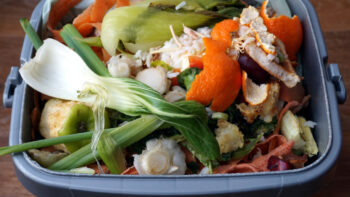
Leftovers
Leftovers comprise a large part of your food waste. This might be because you have grown tired of an unfinished dish, or because the amount left over seems too small to make an entire meal from. There are ways to adopt your leftovers into your food plan and avoid throwing them out if you are committed to reducing your waste in the new year. Try some of the following methods:- Turn one dish into another, such as using a plain meat dish to make a curry.
- Make a meal of smaller items left over from other meals.
- Pack leftovers as part of your lunch, or for your children’s school snacks.Make dishes than can be combined into something new, as this helps you enjoy your leftovers instead of wasting what remains of previous meals.
- Always look for leftovers in the refrigerator if you are hungry before making something new.
Meal Planning
Some of the food waste you have to deal with is not in leftover dishes, but in small amounts of ingredients you did not use while cooking. This could be small offcuts of meat or fat or pieces of fruit and vegetables.Composting
Compost your leftover food scraps at home to enrich the soil of a garden or a potted plant. In addition to creatively using your waste, you are saving by creating your own compost instead of buying fertilizer from the store. Composting can be done outdoors or indoors, although indoor compost requires careful management. You can compost the following food waste items:- Fruits.
- Vegetables.
- Tea bags.
- Coffee grounds.
- Coffee filters.
- Eggshells.
- Nut shells.
Donations
Food banks provide consumables to food-insecure individuals and families. While not all food items are acceptable contributions, there are many types of foods welcomed by a food bank or community project. Related Article: Home Items You Can Repurpose These organizations are often run locally. Find out where your nearest food banks are and get in touch with a program director to learn what types of food can be donated. It is important to create a plan for the times and places at which you are going to donate your food. The bank may offer a collection service for the food you donate or may only accept donations at certain times throughout the day.Special Events
Special events such as a party or an evening out at a restaurant contribute to your food waste. There are a few ways to reuse the items left over from your latest gathering. Consider the following options:- If there is food left over after a dinner party or barbecue, give guests food to take home.
- Large amounts of food left over after a function can be donated to a food bank or community feeding service such as a soup kitchen. Plan for this in advance to ensure the food is stored and transported safely.
- If you attend a function and are offered leftovers, take something you know you can store easily and enjoy later.
- If dining out, make sure to check what the portion sizes are before ordering. Consider ordering a smaller portion or sharing with someone else.
- Ask for a takeout container for your leftovers from a restaurant. You can do this right way, making sure you have put aside a part of the food you want to eat later.
Plan Your Storage
Reusing the leftover food in your home is only effective if it is still safe to eat. Forgetting about your food until it is unusable prevents any of the above plans from being put into practice. Taking steps to educate yourself about how to store different types of food is important. Take care when managing your food storage:- When using your refrigerator, make sure to keep the temperature below 40 degrees.
- Food stored in the refrigerator should be kept in translucent containers, so you are reminded of the contents.
- Move older food forward on the refrigerator shelf so it is used first.
- Freeze or refrigerate items as soon as possible, generally within two hours of the item being prepared.
- Make a note on the container of each food item of the contents and the date it was frozen. Be aware of what is in your freezer and by which date each item was prepared.
- Fresh produce could be canned for longer life, rather than frozen.
- Check the dates on your food. Remember that a sell-by date is different to a use-by date. Do not throw away food unless it is unsafe to eat.
By Admin –